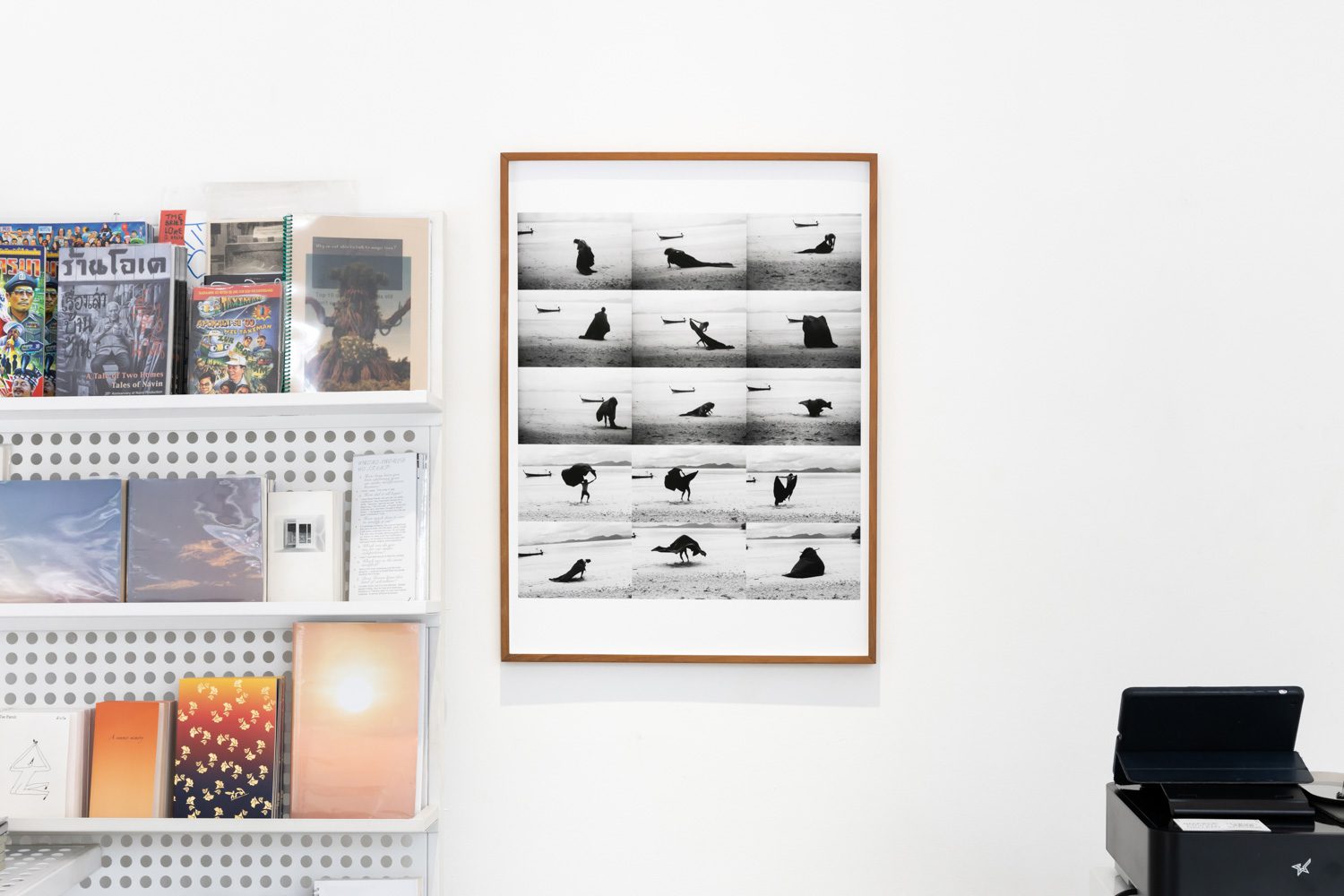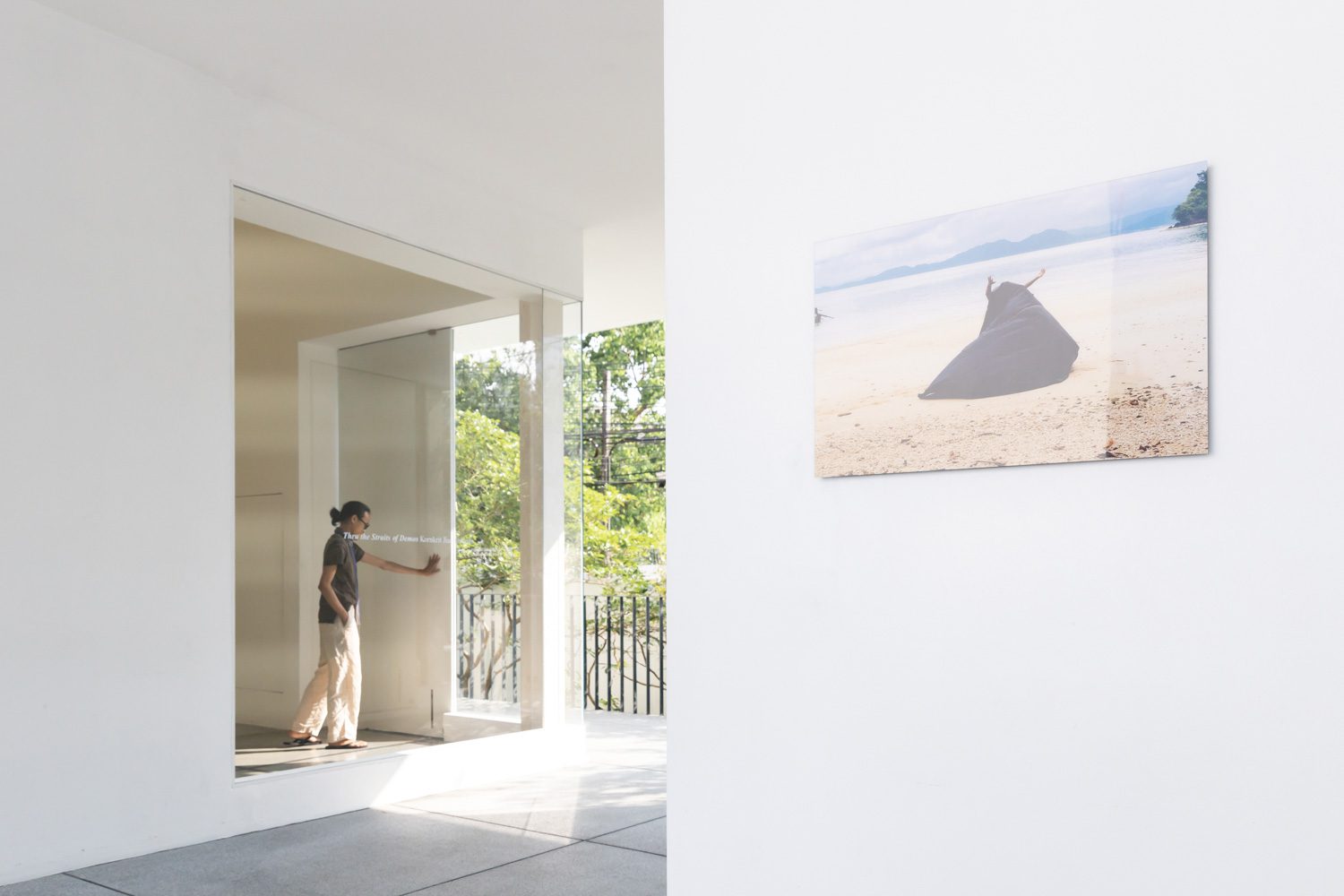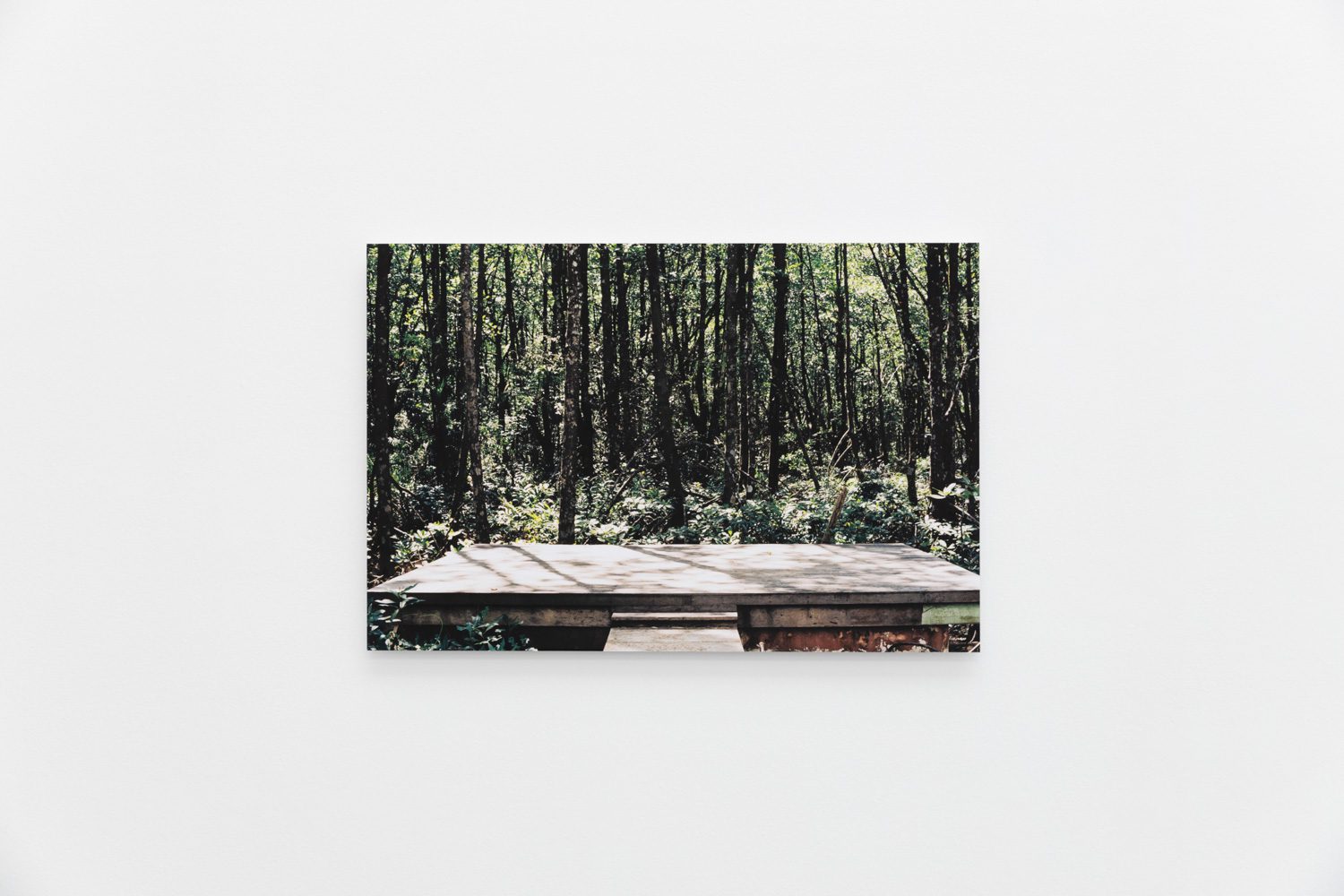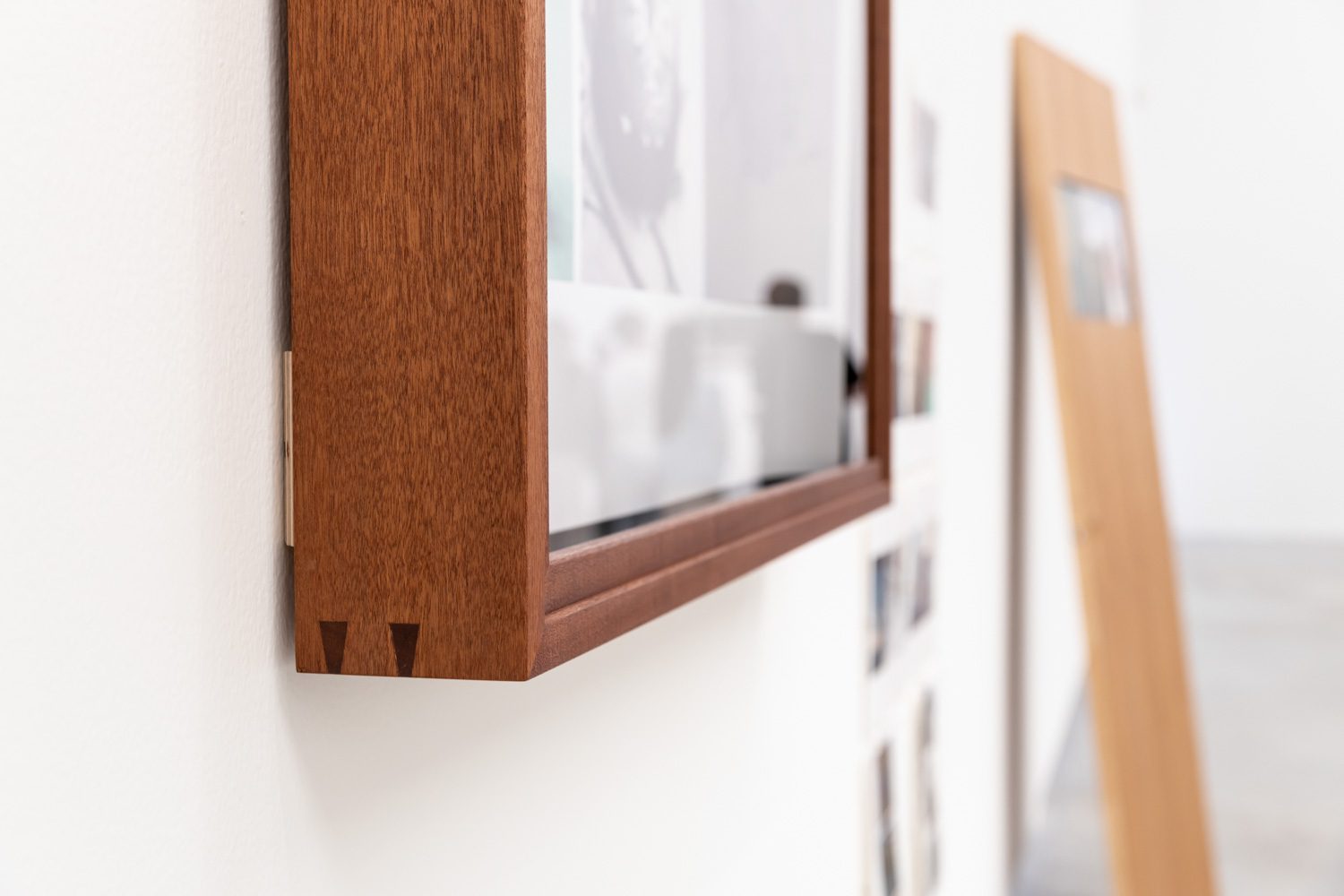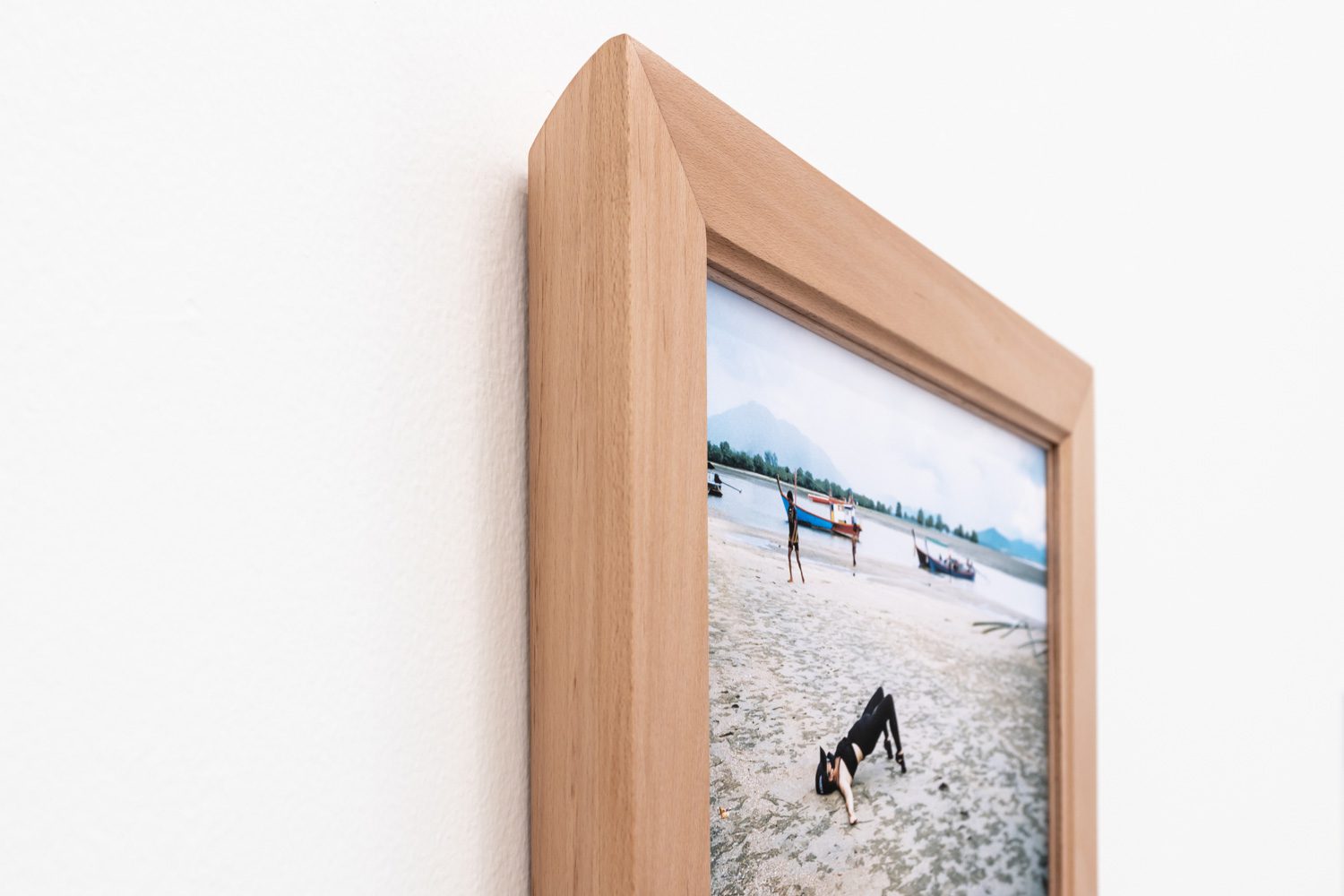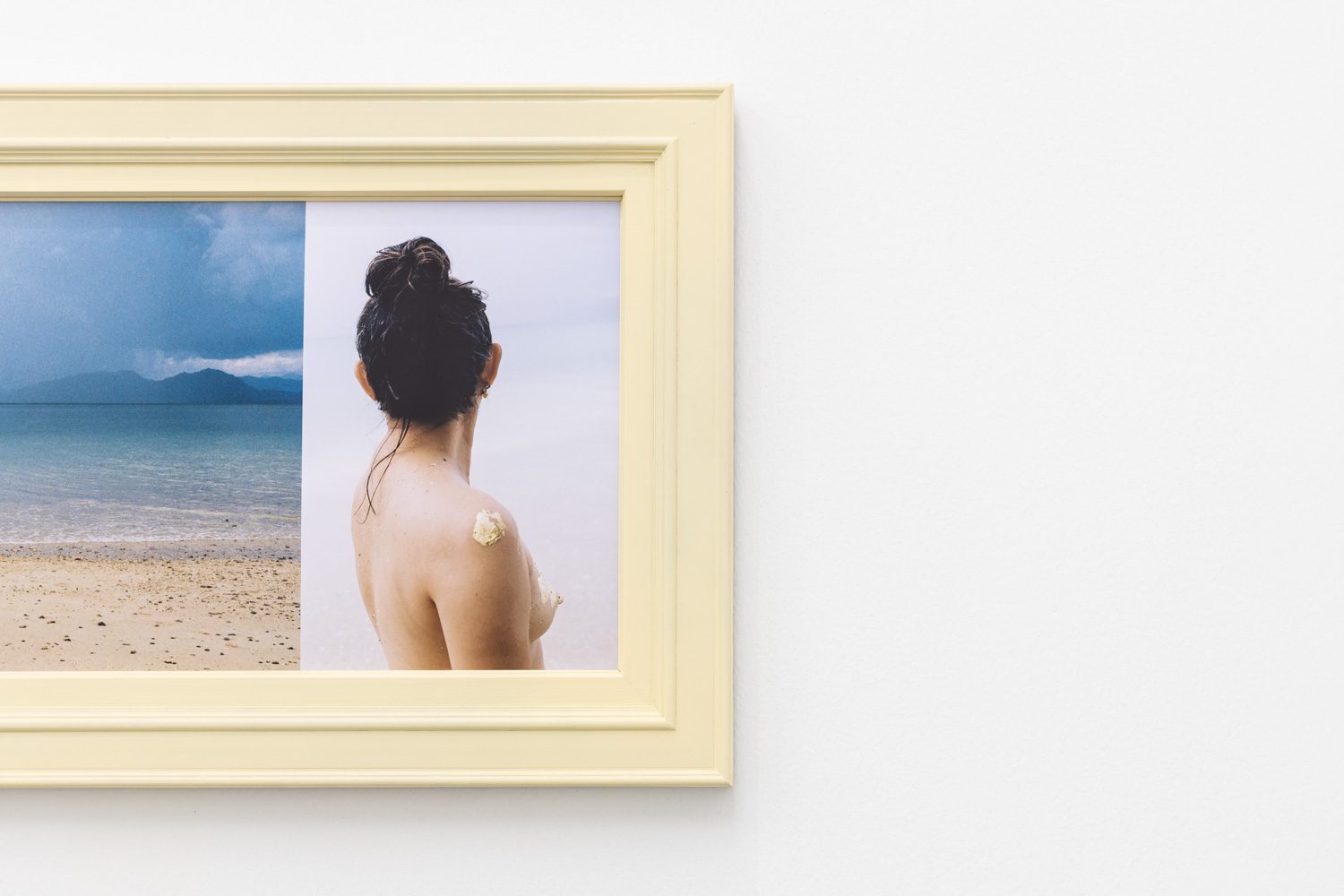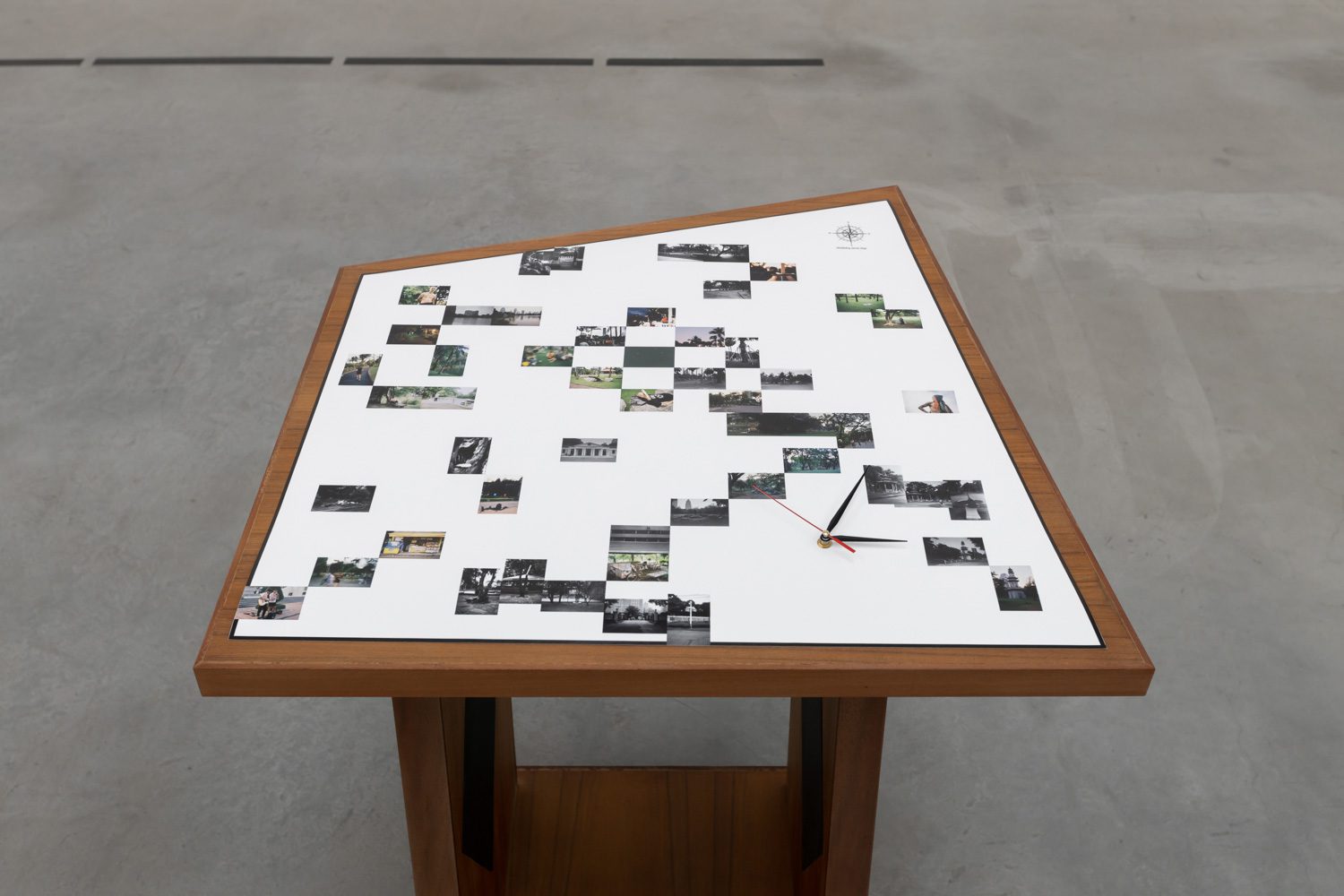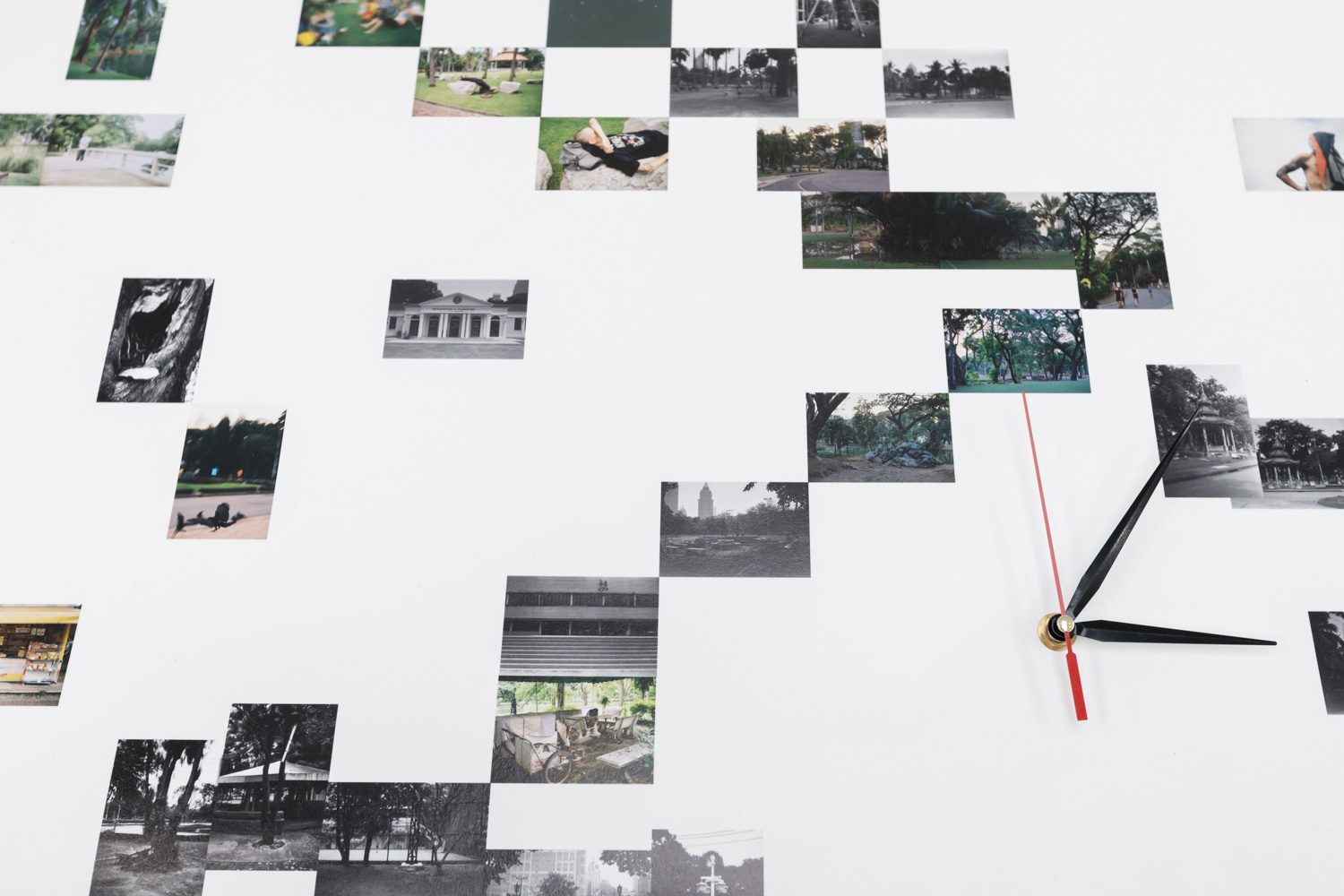THE EXHIBITION BY KORNKRIT JIANPINIDNAN IN WHICH THE COMPREHENSIVE GALLERY SPACE, THE WAY PHOTOGRAPHS HAVE BEEN INSTALLED, AND THE PAPER CONSTITUTE THE POETIC AMBIANCE IN THE SPACE
TEXT: TUNYAPORN HONGTONG
PHOTO: KETSIREE WONGWAN
(For Thai, press here)
This year, Kornkrit Jianpinidnan published three new books as part of his long-term visual poetry project, POEM. He applies the research-based technique with 19: Lumphini Complex, capturing moments and social occurrences that took place in Lumpini Park (the artist observed different overlaps between the public park and people’s personal spaces) during the year 2022. 20: Foreigners and the Area of Four to Eight Sunny Rain chronicled his trip to Isthmus of Kra in Ranong province in southern Thailand, which took place because of his specific interest in the area’s historical, economic and visual aspects. 21: Day for Night depicts stories within the artist’s own apartment; his private space, during the COVID-19 lockdown. The three-book series, which is accompanied by a photo installation exhibition, is Kornkrit’s latest collaboration with BANGKOK CITYCITY GALLERY.

While the photography Kornkrit features in “Thru the Straits of Demos,” are selected from the three books in the POEM series, he opts for a completely new narrative. From the photobooks, where a large number of photographs tell stories in chronological order, to the white cube space of the gallery, the artist picked only a handful of images and displayed them on a more sculptural dimension. Kornkrit also managed the gallery space to evoke certain emotions and sentiments, open for viewer’s interpretation.

“A white cube has this large void that tends to make artists feel like it’s sucking up our energy,” he says. “However, the BANGKOK CITYCITY GALLERY space has many interesting elements, things like the architecture, floor height, skylight, entries and exits, and doors. These components offer an artist more alternatives in terms of how to use and bring out all of the distinct features that the space has to offer. As for me, I chose the aspects of accessibility and movement, which are how my works are accessed and how people move around the exhibition space.”
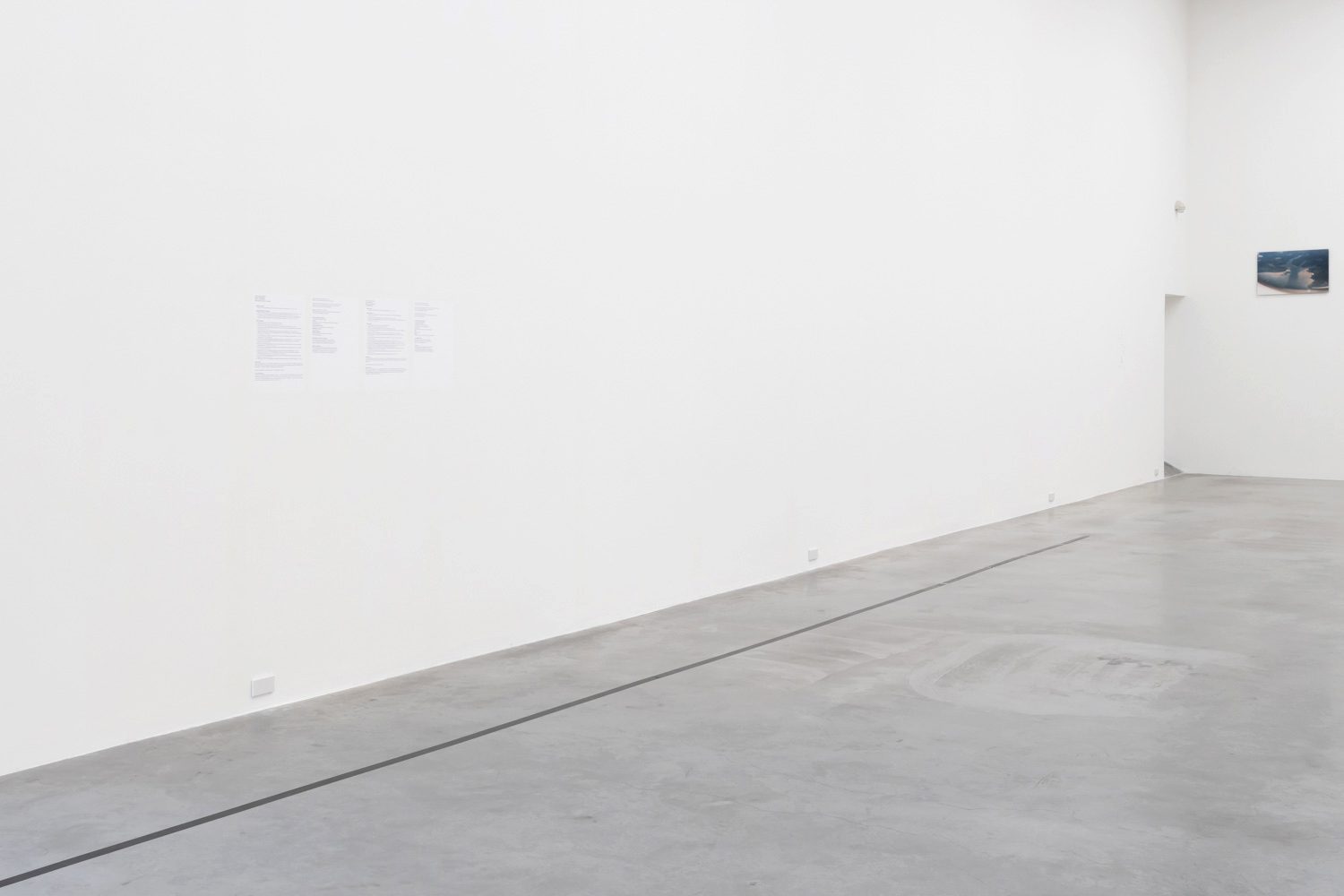
Walking into the gallery space, one would notice a line of masking tape running straight and parallel to the larger wall on the left. The artist purposefully leaves this wall blank, with only a small ‘Wall Text’ (2023), a poem and text on adhesive label, on it. People automatically follow the line, which runs to the farthest end of the wall, where ‘Non Place’ (2023) is shown. The piece, which is a photograph of Isthmus of Kra taken from above, is mounted higher than normal, on the same level as the upper frame of the door to its left (having to look up to see the work felt a little strange). A clockwise walk along the wall to view other selected pieces will end at ‘Wooden Stage’ (2023), which is placed opposite to the wall that ‘Non Place’ is mounted.’ ‘Wooden Stage’ is a photo of wooden platform with a mangrove forest as the backdrop.
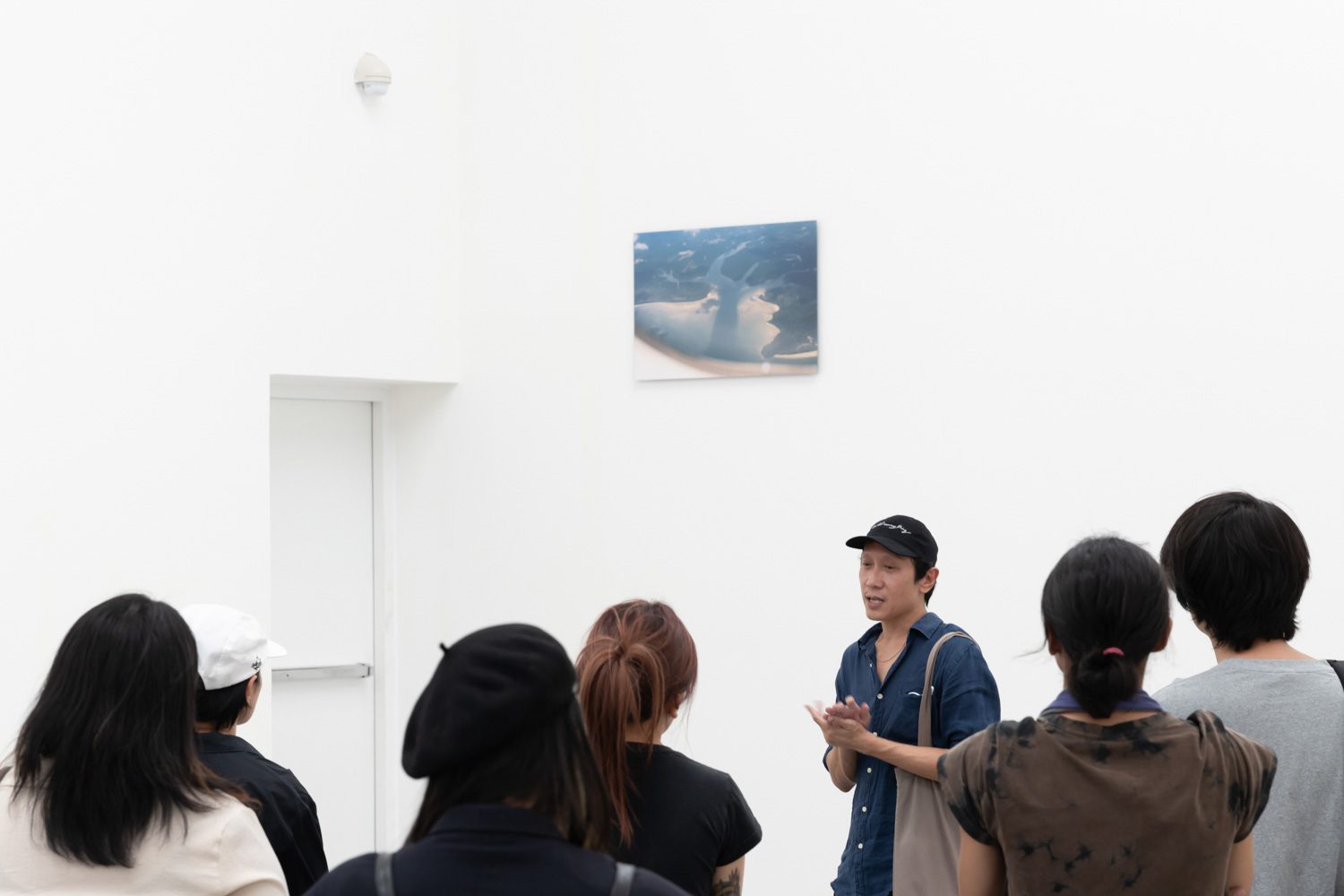
Kornkrit stated that his inspiration for curating the space came from his trip to Ranong. His first plan was to see the historic Isthmus of Kra, train station and track, which the Japanese forces attempted to build during WWII. When he arrived, he discovered nothing substantial enough to work with until he spoke with the locals living nearby, which prompted him and the other three members of his crew to change the plan and head toward the Mangrove Forest Conservation Center.

“There was this footbridge that meanders into the mangrove forest inside the conservation land. The bridge had been constructed out of wood and concrete, and there was one point where the floor was raised, allowing visitors to go up and gaze out over the forest. As I was heading back down, I came across a wooden platform but I had no idea what it was used for. So, that whole experience became an idea to manage the movements inside the exhibition space to correspond with the gallery space. From the parking space, one would have to walk up a few steps and through an entryway into the gallery…it takes me back to my trek through the mangrove jungle.
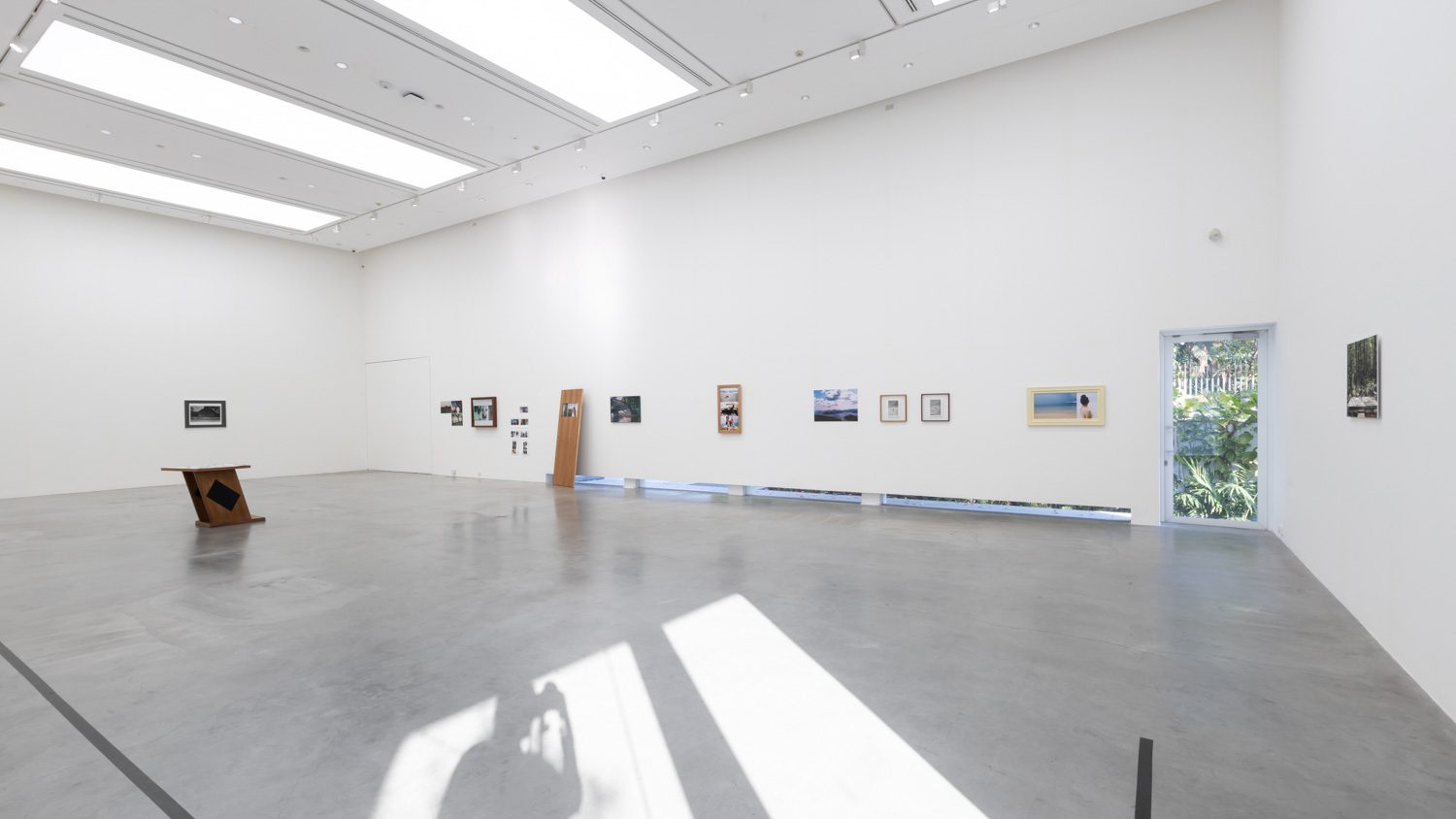
The movement management that Kornkrit talked about might be a bit difficult to explain. But having viewed the exhibition, I have to say that there was this delightful feeling of being able to spend time looking at and contemplating each photograph, including the way it’s been installed. Aside from the earlier mentioned, I noticed that the ‘Wooden Stage’ (2023), or the photo of wooden platform with mangrove forest backdrop, is installed on the wall that is sandwiched by transparent windows that open to the green of the outside trees and sunlight. The work is also placed exactly across from ‘Concrete Stage’ (2023) on the opposite wall, which is a picture of a concrete platform in Lumpini Park that people use for exercise. There is one interesting detail hidden in the picture. Without the artist’s intention, the picture does not completely align with the edges of the paper and the frame. Despite the accidental errors, the work is shown with both displacements remaining.
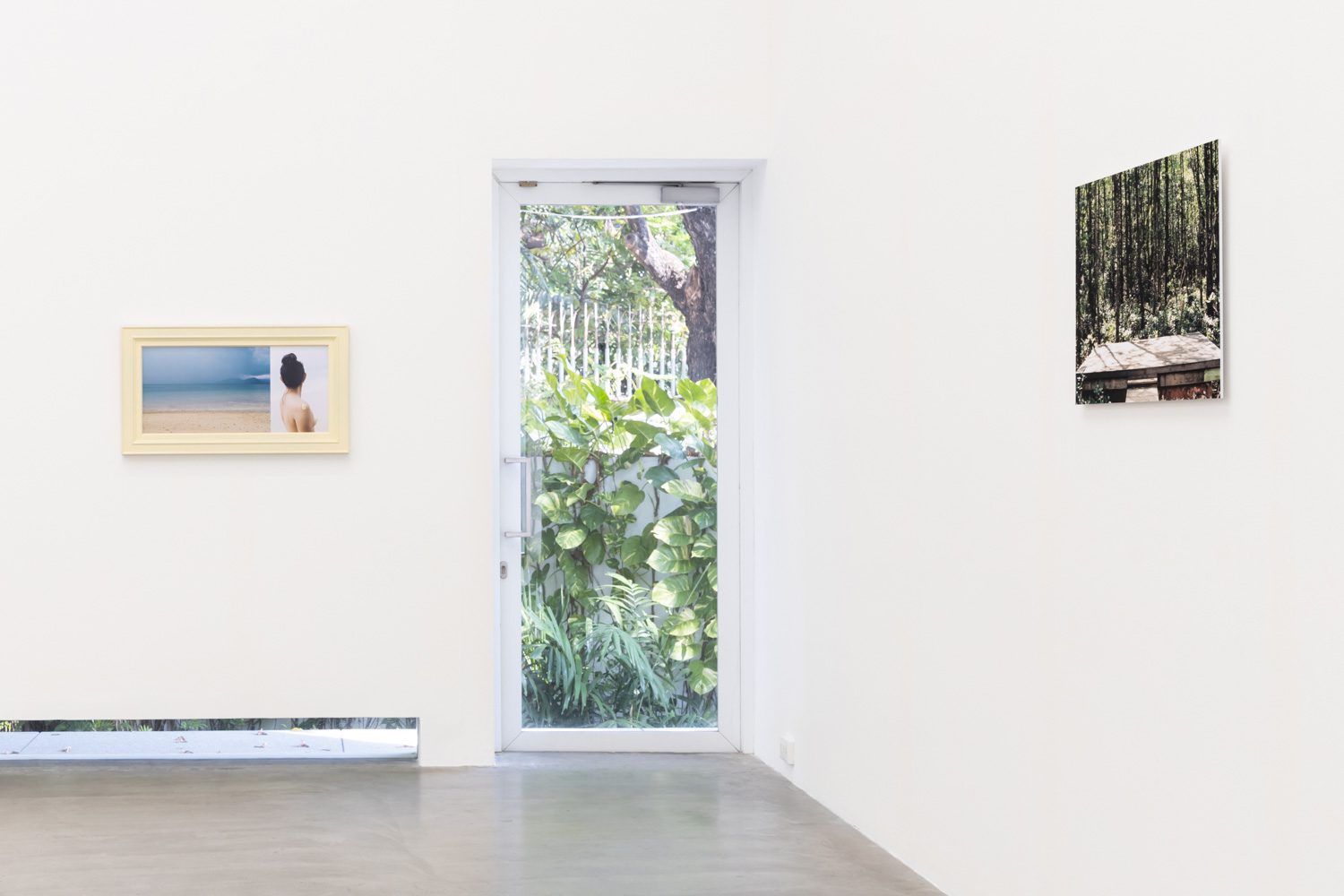

For this exhibition, Kornkrit worked with multiple film labs, ranging from those that develop ‘normal’ photographs such as weddings and graduation pictures to those that specialize in industrial projects and alternative film labs that are experts in vintage photography. “You could say it was my experiment. But I think there was a shift in the social structure during the COVID-19 lockdown, particularly in an economic aspect. When I work, it’s natural for me to want to know what has changed in the photography production process, so I visited many film labs to see what techniques were still accessible or what the current situation was. Working with local labs that work with wedding or graduation day photographs is interesting, and there are certain things I’d like to include in my exhibition. I believe an installation is about an artist’s ability to reflect an overview of society or the context surrounding the artist at that particular time.”
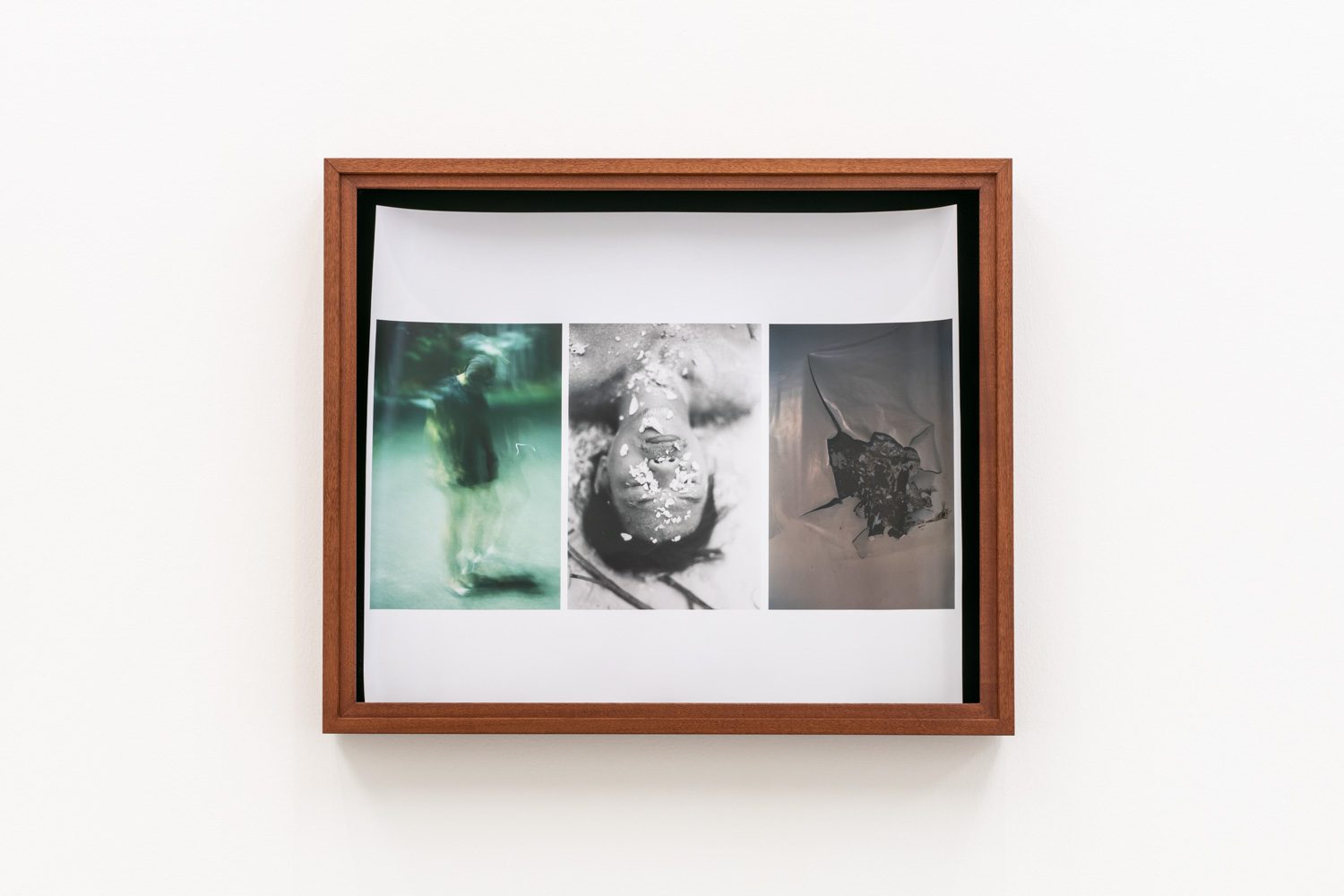
Kornkrit selected frames with varying characteristics for the selected photos and the stories they convey. ‘Boat’ (2023) combines 3 photographs taken in Ranong. The images are put together into a layout and a beech wood frame with gunwale-like elements and corners. The lovely color scheme of ‘Ivory’ (2023), which depicts a topless woman and the sea inside an ivory-colored wooden frame, stands out from the space. ‘Cabinet’ (2023) illustrates sculptural features produced by a collaboration between the artist and a craftsman in the fabrication of a nail-less wood frame. The details are inspired by 19th-century cameras, which evolved from pinhole cameras. The carpentry details do not use any nails and are designed to allow the camera’s back to be opened. The image Kornkrit chose for this frame was developed by a regular film lab and is part of his experiment to search for a satisfying end result.
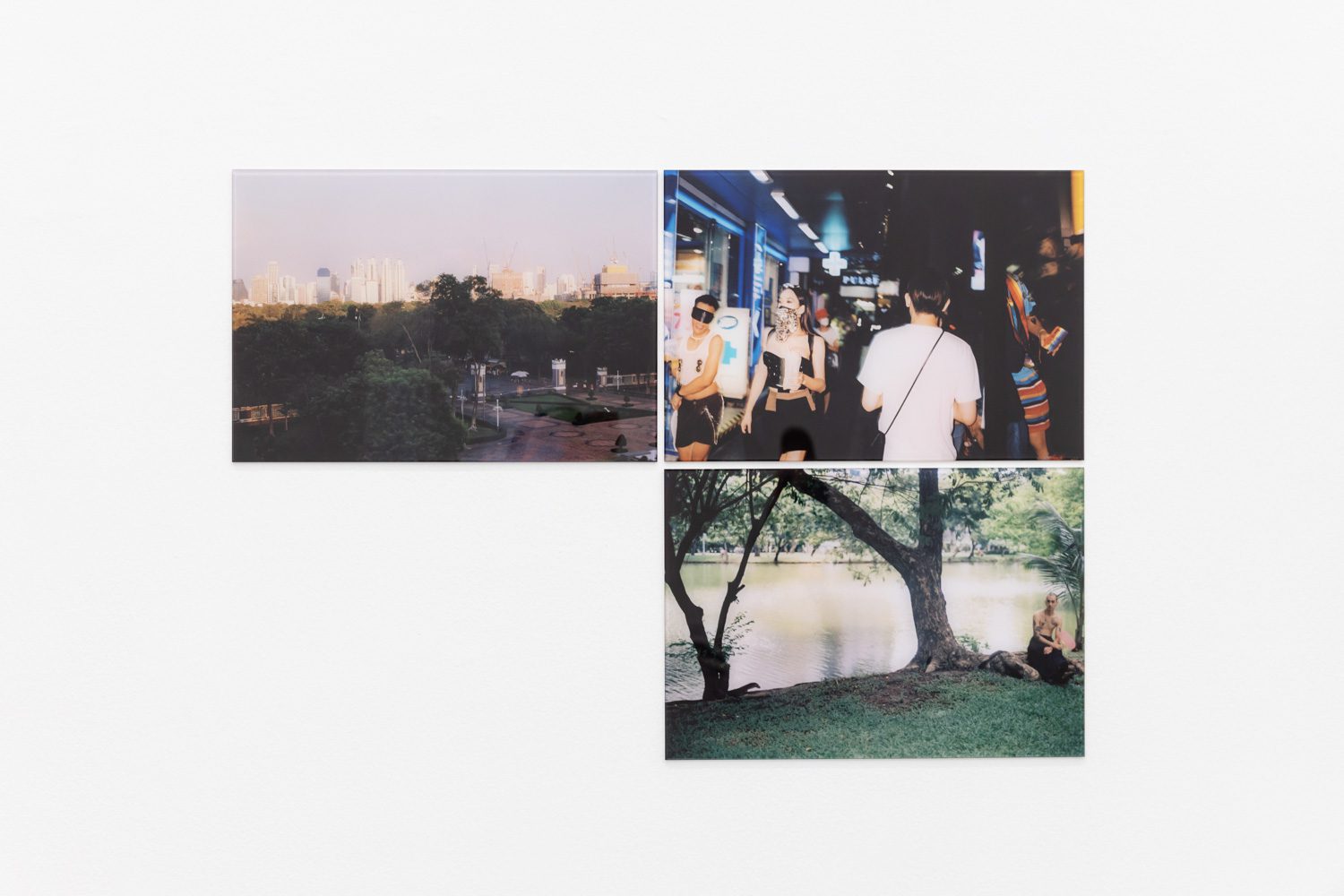
“One may view a photograph as a piece of paper because it’s a medium on which an image appears. But it is more than just a piece of paper. There’s an entire chemical process, the addition of materials such as fibers, behind the finished work, and to me, there’s a sense of sculpture to it.”
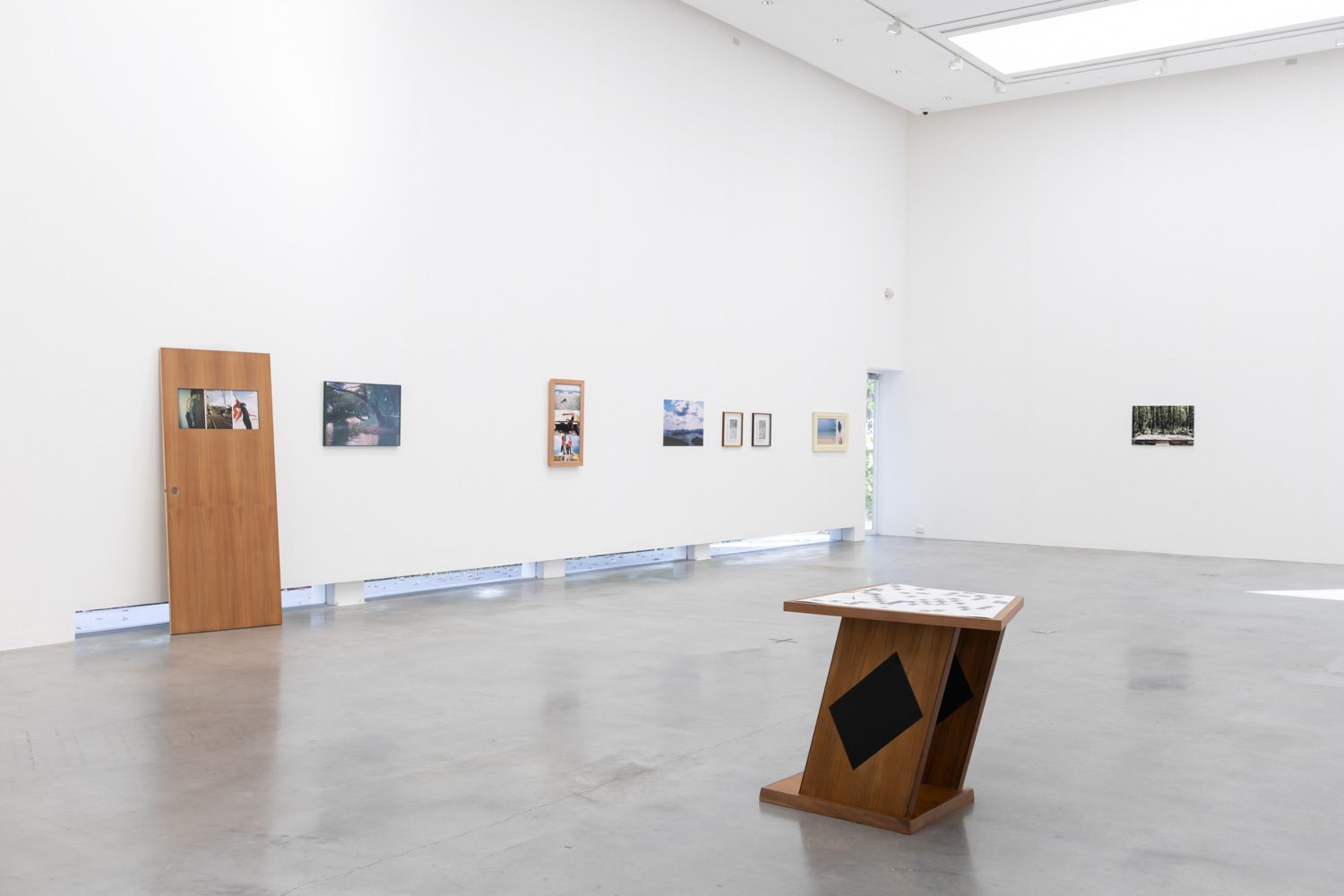
There are two other pieces with evident sculptural components. ‘Door’ (2023) is a photograph installation on a wooden door that is the same size and proportion as Kornkrit’s apartment door. With ‘Winkieboy Secret Map’ (2023), the artist created a site map from images he shot of various spaces and corners of Lumpini Park. The photographs are displayed on the map according to their exact places in the park, along with a story about Lumpini Park and it being a gathering place for the gay community, which may be regarded as part of the park’s history. The site map also contains a clock, which is located in the same spot as the clock tower, with everything installed on a wooden base with a form that mimics the concrete tables found in Lumpini Park.
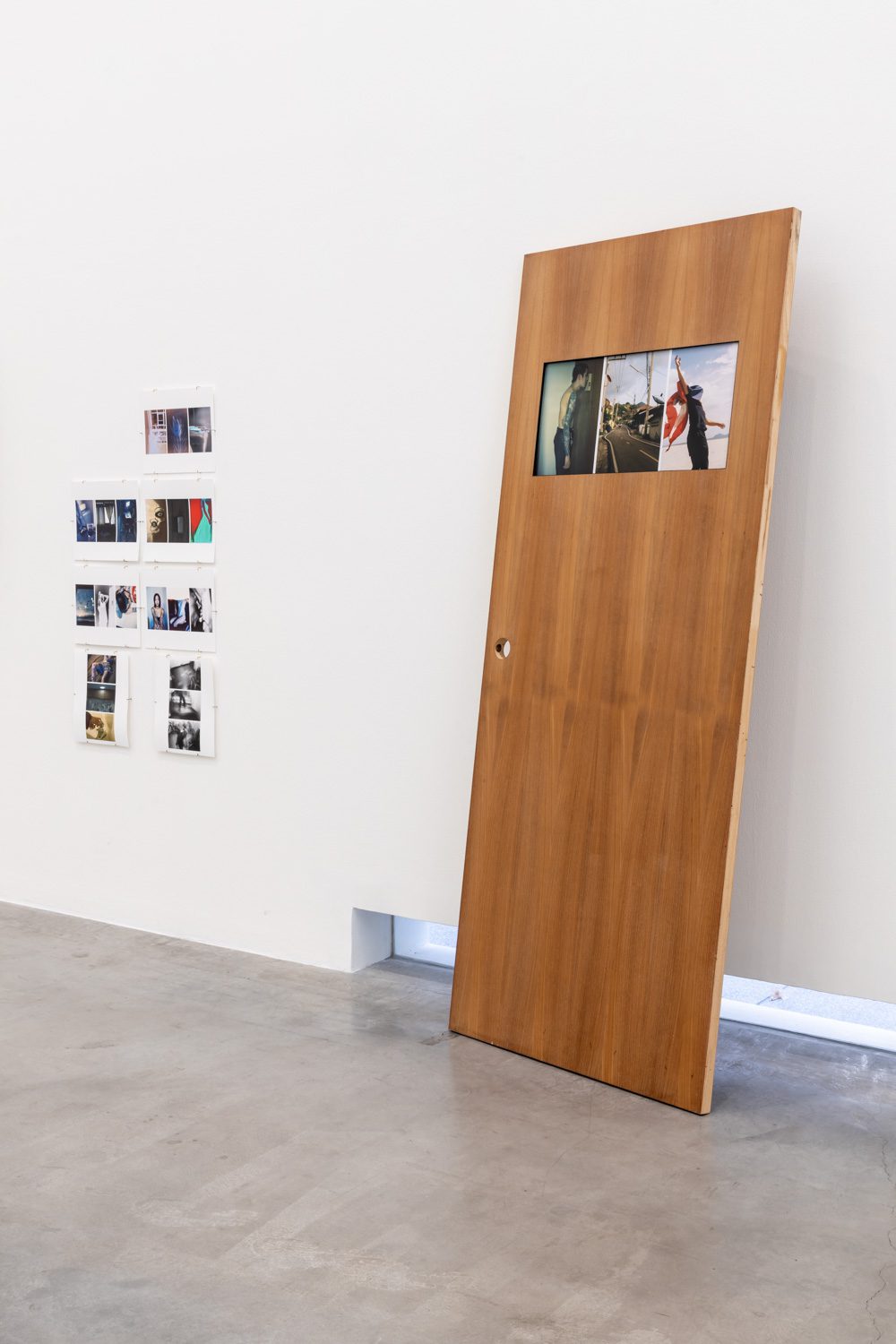
In this photo installation, the photos are not important than the way the artist chose to present them. At the same time, the way these stories are depicted in the exhibition differs from those in the books. Nonetheless, what I experienced from both the POEM series and the ‘Thru the Straits of Demos’ exhibition is the poetic ambiance discernible both through the pages of the books and the gallery space, both of which are created from diverse ways of thinking and methods utilized by the artist.
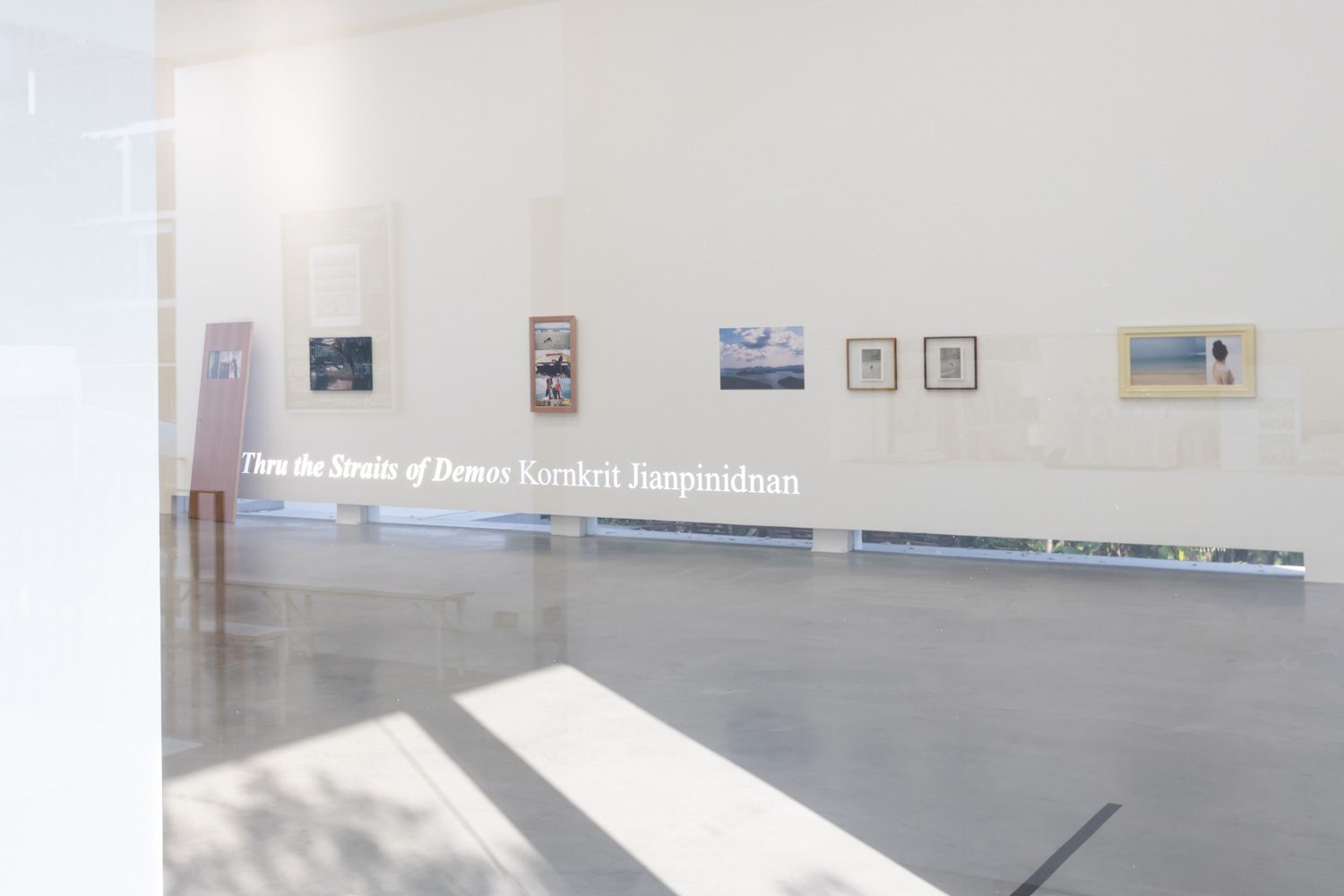
Kornkrit Jianpinidnan’s ‘Thru the Straits of Demos’ is now showing at BANGKOK CITYCITY GALLERY from April 22nd until June 3rd, 2023.


